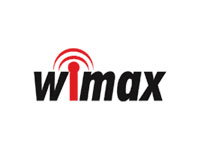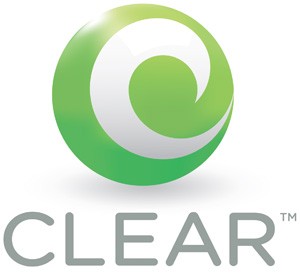 AT&T and Verizon Wireless are thrilled customers are moving away from subsidized smartphones, because both are raking in extra revenue they are not returning to customers with lower plan prices.
AT&T and Verizon Wireless are thrilled customers are moving away from subsidized smartphones, because both are raking in extra revenue they are not returning to customers with lower plan prices.
In the past, customers have usually chosen discounted new phones that come with a two-year contract. A smartphone that retails for $650 sells in the store for $199 or less, with the $450 subsidy gradually repaid through artificially high service plan prices over the length of the contract. The subsidy system didn’t hurt long-term revenues because the money was eventually recovered and contracts locked most customers into place for at least two years. But Wall Street has never been thrilled by carriers tying up subsidy money on the books for two years.
For a transition away from the subsidy system to be fair, providers need to lower plan prices enough to drop the subsidy payback. But neither AT&T or Verizon Wireless have done that.
AT&T customers choosing an $650 iPhone on contract under the subsidy system will pay $200 up front, a $36 activation fee, and $80 a month for a two-year plan with 2GB of data. Total cost: $2,156.
If you buy your own iPhone and finance it through AT&T, which most customers are likely to do, the cost is $65 a month for the service plan, no activation fee, and a device installment payment plan of $32.50 a month for 20 months. Total cost: $2,210 or $54 more than the subsidized plan costs.
 Verizon Wireless is a bigger taker.
Verizon Wireless is a bigger taker.
Sign a two-year contract with Big Red for that same phone and 2GB plan and you will pay $200 up front, an activation fee of $35, and $75 a month for the service. That adds up to $2,035. Buying a no-contract iPhone without a subsidy costs $27 a month for the installment plan, no activation fee, and $65 a month for the service. That totals $2,210, $175 more than a subsidy customer pays.
Big spending-customers can realize some further savings by upgrading to plans with a bigger data allowance, but those plans won’t make sense if you don’t use up your allowance.
Both companies claim the unsubsidized plans save customers money, but they actually don’t for most because neither lowered plan rates enough and are now pocketing the difference. Verizon and AT&T also argue customers don’t have to pay several hundred dollars up front for a phone, which is true, but they will pay more for it over time. It is also true these unsubsidized plans allow for earlier upgrades, but customers are paying for that privilege.
It’s hard to say whether AT&T and Verizon Wireless will pay fair value for old phones as customers choose to upgrade. If they don’t, customers could effectively hand both companies even more money through undervalued trade-ins.
At least 40 percent of AT&T customers are choosing the unsubsidized route through AT&T Next and the company couldn’t be more pleased.
In a conference call with investors this week, AT&T’s chief financial officer told analysts wireless service margins were up to 45.4%, with AT&T Next having a positive impact on that margin.
John Stephens noted that with the retail price of smartphones being in the $600-650 range, more customers are being convinced to sign up for AT&T’s handset insurance plan, which provides AT&T with two benefits. First, the insurance earns AT&T more than it pays out in claims and second, devices returned under the insurance program are refurbished and then sent to other AT&T customers filing claims in the future.
Tim K. Horan from Oppenheimer & Co., Inc. believes AT&T’s total subsidy expenses/internal costs are around $400 for a subsidized phone but only $100 for a phone sold on the Next unsubsidized installment plan.
With competition from T-Mobile starting to have an impact on both companies, AT&T and Verizon Wireless have plenty of room to further lower their rates and still come out ahead.


 Subscribe
Subscribe Comcast will increase capital spending in the first half of 2014 to hasten the rollout of its advanced X1 set-top boxes and new wireless gateways that provide public Wi-Fi from customer homes.
Comcast will increase capital spending in the first half of 2014 to hasten the rollout of its advanced X1 set-top boxes and new wireless gateways that provide public Wi-Fi from customer homes.

 Although Comcast’s first quarter capital expenditures increased $51 million (or 4.6%) to $1.1 billion (10.6% of cable revenue versus 10.7% in the first quarter of 2013), the cable company returned even more money to shareholders. In the first quarter, the company boosted return of capital by 35% to $1.3 billion. Comcast repurchased its own shares of stock totaling $750 million and paid $508 million in dividends for the quarter.
Although Comcast’s first quarter capital expenditures increased $51 million (or 4.6%) to $1.1 billion (10.6% of cable revenue versus 10.7% in the first quarter of 2013), the cable company returned even more money to shareholders. In the first quarter, the company boosted return of capital by 35% to $1.3 billion. Comcast repurchased its own shares of stock totaling $750 million and paid $508 million in dividends for the quarter. Telus, Bell and Rogers charge customers as much as 45 percent less on wireless service where they face a fourth regional competitor in a case of suspected predatory pricing that could threaten the viability of competition in Canada’s wireless marketplace.
Telus, Bell and Rogers charge customers as much as 45 percent less on wireless service where they face a fourth regional competitor in a case of suspected predatory pricing that could threaten the viability of competition in Canada’s wireless marketplace.
 T-Mobile is back with some very aggressively priced packages on data plans, including one offering almost a year of free data. But more impressively, customers also have a chance to buy a 4G LTE-equipped tablet for the same price as a Wi-Fi only version.
T-Mobile is back with some very aggressively priced packages on data plans, including one offering almost a year of free data. But more impressively, customers also have a chance to buy a 4G LTE-equipped tablet for the same price as a Wi-Fi only version. The biggest problem wireless carriers have selling tablets is justifying the cost of 4G-equipped models that typically run at least $100 more than a Wi-Fi only version. As a result, 4G-equipped portable devices like these just don’t sell well. T-Mobile is tackling that problem by discounting the MSRP of their 4G tablets to the same price one would pay for a Wi-Fi only equipped device.
The biggest problem wireless carriers have selling tablets is justifying the cost of 4G-equipped models that typically run at least $100 more than a Wi-Fi only version. As a result, 4G-equipped portable devices like these just don’t sell well. T-Mobile is tackling that problem by discounting the MSRP of their 4G tablets to the same price one would pay for a Wi-Fi only equipped device. Sprint has
Sprint has  In practice, WiMAX in the United States never achieved great success. Sprint and Clearwire’s network was never built out sufficiently to provide nationwide coverage, and because it relied on very high frequencies, even customers inside claimed service areas often dealt with reception problems, especially indoors. Clearwire’s home broadband replacement often required reception equipment be placed near a window, preferably one without a thermal coating that could block or degrade the signal.
In practice, WiMAX in the United States never achieved great success. Sprint and Clearwire’s network was never built out sufficiently to provide nationwide coverage, and because it relied on very high frequencies, even customers inside claimed service areas often dealt with reception problems, especially indoors. Clearwire’s home broadband replacement often required reception equipment be placed near a window, preferably one without a thermal coating that could block or degrade the signal. Despite the promise of greatly enhanced data speeds with the next generation of WiMAX, dubbed WiMAX 2, many of the world’s largest wireless carriers were already preparing to move on. In particular, China Mobile (and its 600 million customers) became the decisive factor that turned WiMAX 2 into a bad bet. China Mobile decided the better choice was TD-LTE, a variant of LTE technology. With China Mobile providing service to 10 percent of the world’s mobile users all by itself, support for TD-LTE grew and attracted equipment manufacturers that saw the earnings potential from selling tens of millions of base stations.
Despite the promise of greatly enhanced data speeds with the next generation of WiMAX, dubbed WiMAX 2, many of the world’s largest wireless carriers were already preparing to move on. In particular, China Mobile (and its 600 million customers) became the decisive factor that turned WiMAX 2 into a bad bet. China Mobile decided the better choice was TD-LTE, a variant of LTE technology. With China Mobile providing service to 10 percent of the world’s mobile users all by itself, support for TD-LTE grew and attracted equipment manufacturers that saw the earnings potential from selling tens of millions of base stations.